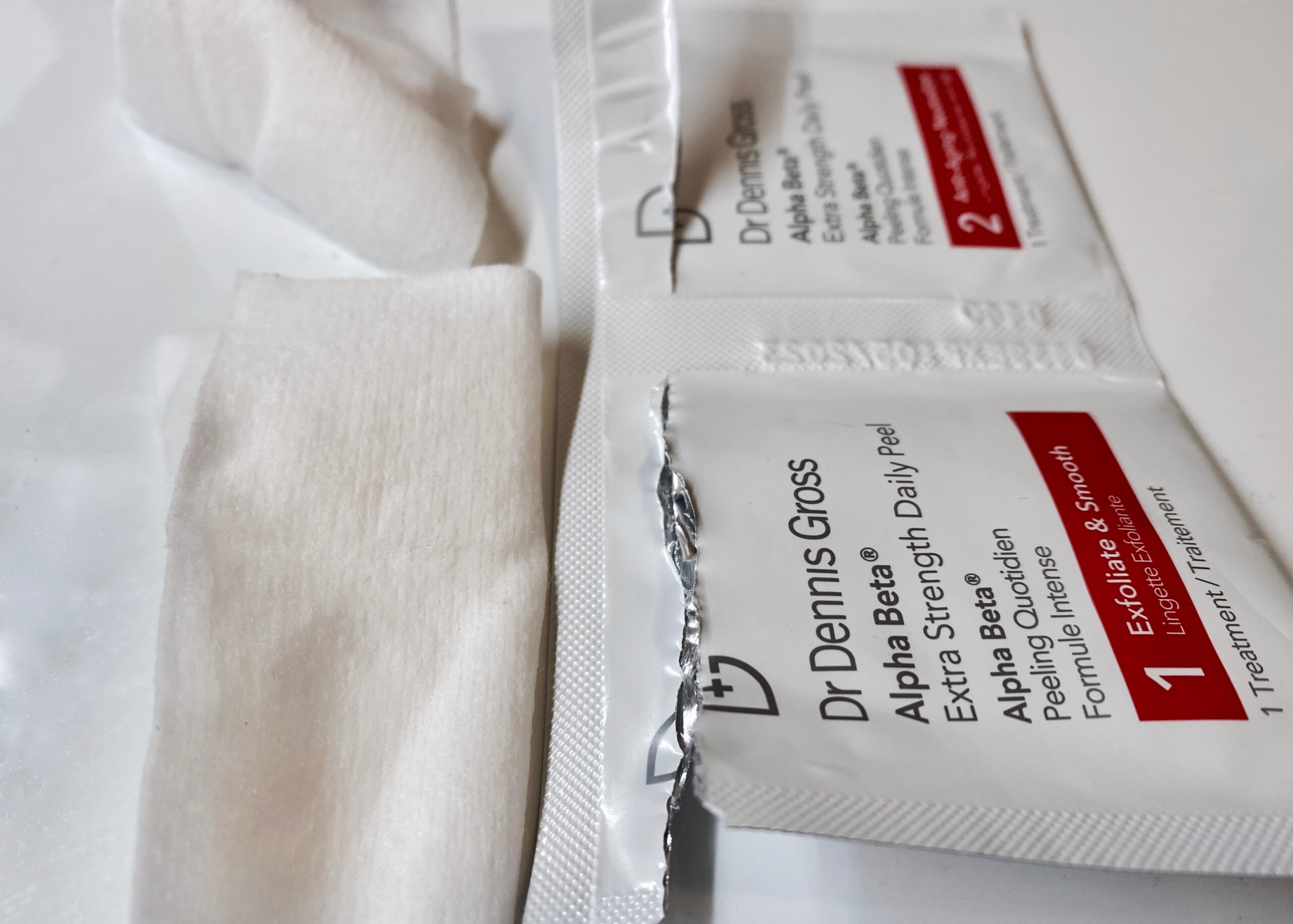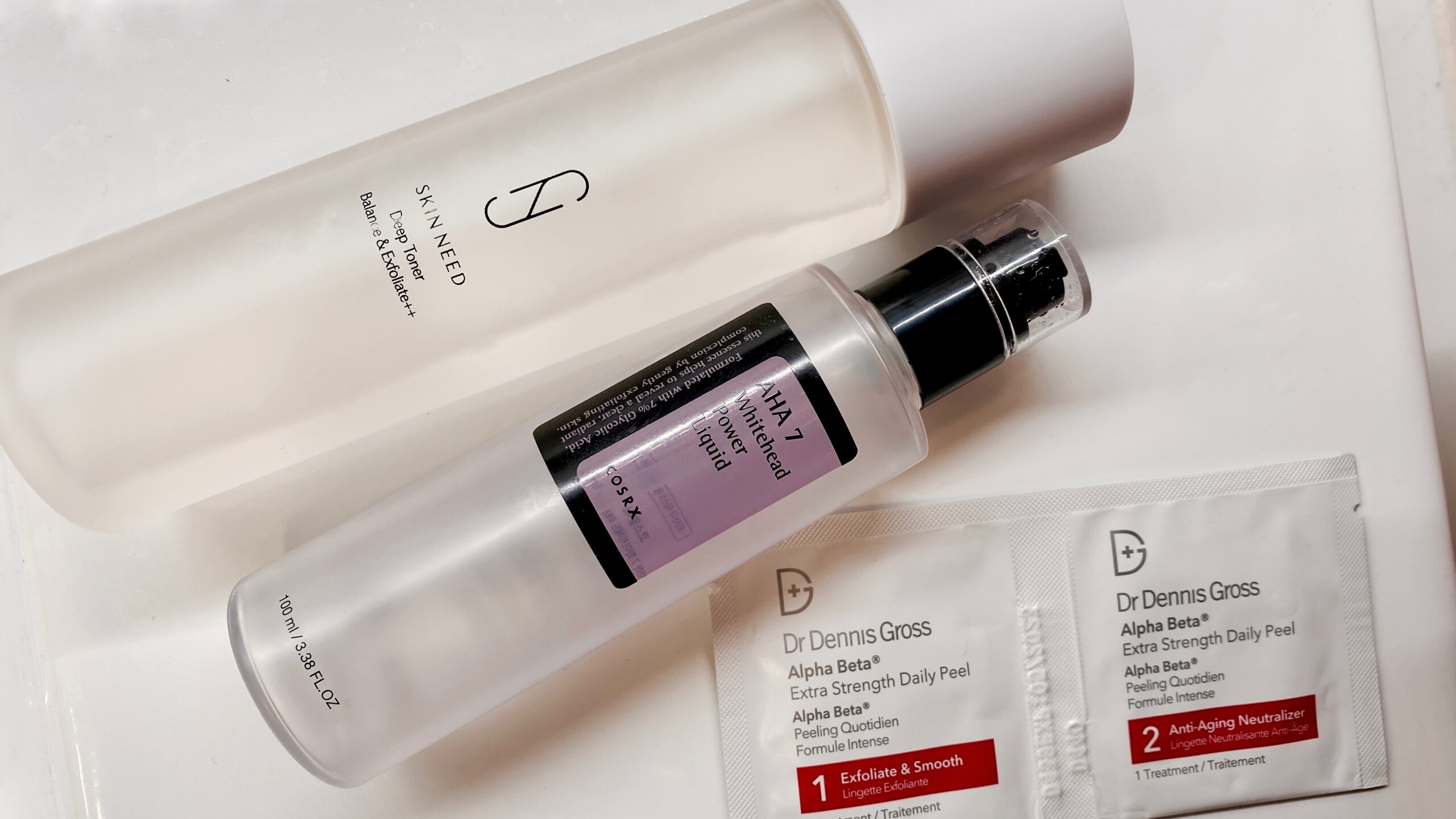Acid on the skin may sound like a horror movie to some. Fear not formulated acids for the skin are fantastic, and almost everyone can benefit from them!
If your a newbie to acids, you may have some questions after learning there are different kinds and product formulation styles. Now where do they fit in your routine, and which one should you be using?
What do acids do for the skin?
Acids are an exfoliation step, but unlike the physical exfoliation method with granules scrubs, acids can be gentler and more effective. You could think of acids as a dialled down daily version of salon chemical peels.

Types of acids?
There are three categories of where acid ingredients fall into, those are:
ALPHA HYDROXY ACIDS (AHA)
These are the kind you will see most available, and ingredients include: glycolic, citric, mandelic, malic, tartaric and lactic.
AHA’s are suitable for people with normal to dry skin, sun-damaged skin, and signs of ageing. They work as in exfoliant loosening and shedding old skin cells. They also work deeper in the skin to stimulate collagen; this is done by stimulating the fibroblasts, which are the collagen-producing cells in your skin.
BETA HYDROXY ACID (BHA)
For BHA, there is only one, and we have all heard of, salicylic acid. This one’s for people with oily skin, as it’s oil-soluble and helps with acne, bumps, clogs, blemishes, and enlarged pores. Like AHA’s, salicylic acid works to exfoliate the skin but can better penetrate oil and go deep into pores. A lesser-known benefit of salicylic is its ability to calm down inflammation and redness, which many acne sufferers experience.
POLYHDROXY ACIDS (PHA)
These are for the sensitive skins, thought to be modern AHA’s. The ingredients in this category are Gluconolactone, lactobionic and maltobionic.
The difference is with the molecule size; PHA’s are larger than AHA, and BHA’s so working only on the skin’s surface, thus being less disrupting for sensitive skins. Like AHA’s, they still help with skin tone and texture, lifting off old skin cells, plus protect against the degradation of collagen by fighting a process called glycation.
Product forms of acids and how to use them
Most commonly, you will find them in a liquid form like a toner. These will be used in the traditional ‘toner step’ and often called ‘acid toner’. Acids can be formulated as pre-soaked pads and gels; remember, acid formulations do vary in strength.
Where they go in your routine is after cleansing / double cleansing and before essences and serums. Just like when adding anything new into your skincare routine, start slowly. Acids are no exception; start using only a few times a week. After you feel you’ve got the hang of it and your skin is looking ok, you can build up to once a day, though I would not recommend use acid on the same night as retinol night.
Wait times
Not necessary, but some people like to wait a little bit before applying the next step to allow the acids to work on your skin first. When you start the next step, it regulates the PH, therefore giving the acids less time to work.
Note: Hyaluronic acid and azelaic acid are not exfoliating acids and generally not thought of when you talk skincare acids.
Product recommendations:
As always, say hi on Instagram or join the Facebook group!







